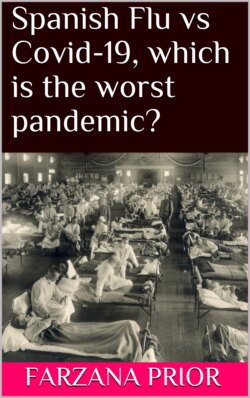Читать книгу Spanish Flu vs Covid-19, which is the worst pandemic? - Farzana Prior - Страница 7
A Tale of Two Cities
ОглавлениеBefore comparing Covid-19 and Spanish Flu, let’s look at how two cities in the United States (Philadelphia and St Louis) responded to the Spanish Flu during World War 1.
The first wave of the Spanish Flu had hit the United States in March 1918, presenting at Camp Funston in Fort Riley, Kansas, a military base, and most likely the origin of the Spanish Flu in the US. The first wave consisted of mild symptoms with those infected experiencing symptoms such as chills, fever and fatigue and included a low mortality rate.
During the summer of 1918, the first wave subsided to come roaring back in the Fall. In this second wave, the virus had mutated into a deadly, contagious virus, where victims died within hours or days of developing symptoms. Their skins turning blue and their lungs filling with fluid that caused them to suffocate (pneumonia).
Officials in Philadelphia and St Louis became aware of the existence of the Spanish Flu within their respective cities around the same time. The response to this infiltration was significantly different, yielding some very valuable lessons.
Philadelphia held its Liberty Loan Parade on the 28th of September 1918. This parade was in support of the war effort by raising funds for the war, to disastrous results. City officials were aware of the disease and that it was rampant in the army and the navy, and informed the public that it will be stopped before it spread to civilians. Despite this, on the 28th of September 1918, the parade went ahead, and two hundred thousand people filled Philadelphia’s sidewalks to see the soldiers and the marching bands. Seventy-two hours later, every hospital in Philadelphia was filled to capacity and many died soon after.
